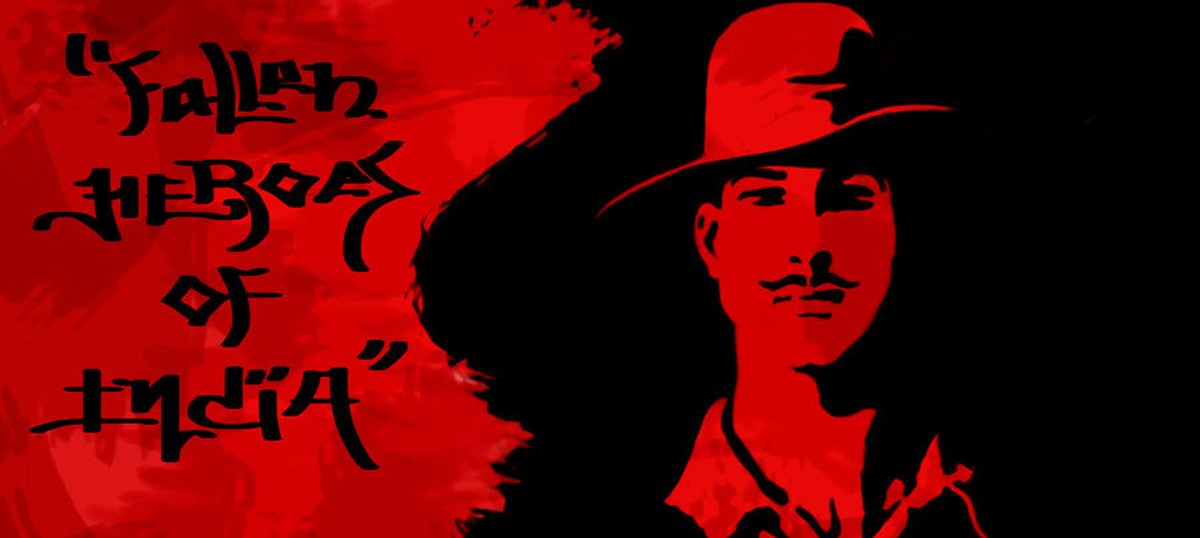By attacking historian Bipin Chandra's book, politicians have yet again waded into territory best left to professionals.

On December 23, 1929, some members of the Hindustan Republican Socialist Army and Association attempted to blow up a train carrying the Viceroy, Lord Irwin, just outside Delhi. Though the train was derailed, Irwin escaped unscathed. However, the action drew the wrath of Mahatma Gandhi who thanked god for saving the life of the British official and lambasted the young revolutionaries.Their act, he said in an essay titled The Cult of The Bomb, was “a most outrageous crime”.
A few weeks later, in January 1930, a young member of the HRSA, Bhagawati Charan Vohra, in consultation with his colleague Bhagat Singh, wrote a response to Gandhi’s critique of their tactics. It was titled The Philosophy of the Bomb.
“The revolutionaries see the advent of the revolution in the restlessness of youth, in its desire to break free from the mental bondage and religious superstitions that hold them,” Vohra declared. As young people get more saturated with the “psychology of revolution”, he suggested, they will come to have a clearer realisation of national bondage, the desire for freedom will grow and, “in their righteous anger, the infuriated youth will begin to kill the oppressors”.
He wrote:
“Thus has terrorism been born in the country. It is a phase, a necessary, an inevitable phase of the revolution. Terrorism is not the complete revolution and the revolution is not complete without terrorism. This thesis can be supported by an analysis of any and every revolution in history. Terrorism instills fear in the hearts of the oppressors, it brings hopes of revenge and redemption to the oppressed masses, it gives courage and self-confidence to the wavering, it shatters the spell of the superiority of the ruling class and raises the status of the subject race in the eyes of the world, because it is the most convincing proof of a nation’s hunger for freedom.”
It is very clear from this extract that the revolutionaries considered terror as a legitimate means, a necessary stage in the scheme of revolutionary struggle. While reading the text, it is important to remember that these people were well aware of the difference between terror, violence and armed struggle. All these words are used appropriately, with the exactness of intention.
Creating fear
Terrorist actions are part of armed struggle. There is a distinctiveness to them: they are random, generally unannounced, intended more to surprise the enemy and the general population and strike awe in them.
A terrorist act is mainly aimed at creating fear in the hearts of the adversary. An act of terror creates an impact that is hugely disproportionate to the scale of the action. It challenges the claim of military superiority of the enemy.
Terrorist acts are also aimed at converting sceptics into followers by assuring them that the revolutionaries hold the real power. As Vohra declared in the essay: “It gives courage and self-confidence to the wavering.”
The writings of Bhagat Singh make it apparent that even when he justified the use of violence and terror, he did not make a fetish of them. If one wants to describe this, it has to be called “revolutionary terror”: terror for the sake of revolution. Terror then is a technique. (It is also used by the state. When the police burns down entire villages, it is resorting to terror.)
One also needs to remember that Singh and his friends were deeply inspired by Russian revolutionaries, who used the method of terror in their struggle against the Tsar.
It’s clear that historian Bipan Chandra was not making a value judgment when he described Bhagat Singh and his comrades as “revolutionary terrorists” in India’s Struggle for Independence, the book he co-authored in 1988 with some of India’s most respected historians. More than two decades later, the book, which has long been a part of Delhi University’s curriculum, drew objections from members of the Rajya Sabha for describing Bhagat Singh and his comrades as terrorists.
On Thursday, the Deputy Speaker of the Rajya Sabha PJ Kurien thought it fit to intervene in a scholarly debate using his privilege and Delhi University backed down, stopping the sale and distribution of the book. Human Resources Minister Smiti Irani also weighed in, describing the text as an “academic murder of sacrifices of individuals”.
But anyone who has studied the period knows, Bipin Chandra was merely fixing a description to Bhagat and his comrades, trying to remain faithful to the way they saw themselves at one point of their revolutionary life.
Accomplished authors
Bipan Chandra is no pamphleteer, neither are his co-authors, who include KN Pannikar and Mridula Mukherjee. They are professional historians who are in the business of language, they use their words with care. If there is some discomfort with some words, ideally it should be debated by Bipan Chandra’s academic peers and not the public or their representatives, who are not trained in the discipline.
MPs or MLAs should not use the power and privilege that they enjoy and claim in the name of being the representatives of the people to judge matters that are better left to professionals. It will be a death blow to the very culture of professionalism.
It is also sad that a university that seeks a seat among the top universities of the world does not have the courage to stand up to this bullying and assert its scholarly right.
By preventing students from reading the book, which describes Bhagat Singh and his comrades as “revolutionary terrorists”, we deprive them of an opportunity to understand and appreciate the journey of words like “terror”, to think why at one point of time it was used with pride and how its meaning has changed.
Article first published on Scroll.in